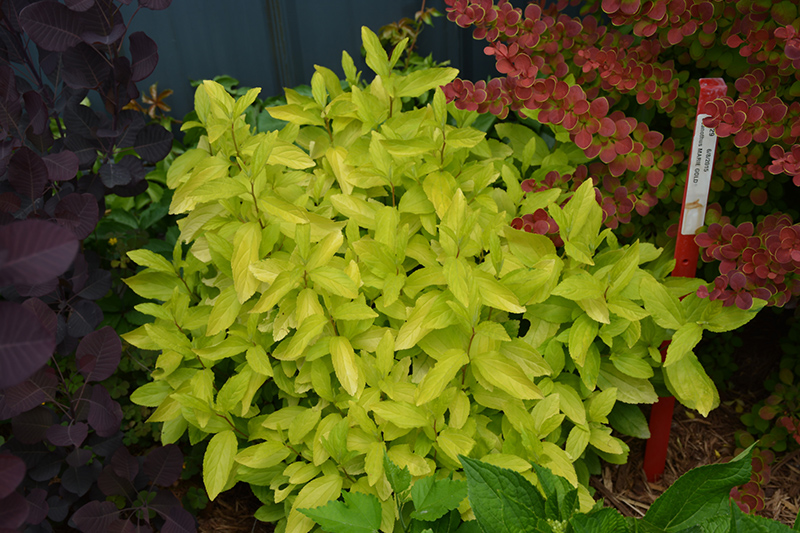Plant Finder
Marie Gold® New Jersey Tea
Ceanothus 'Minmadore'
Height: 4 feet
Spread: 4 feet
Sunlight:
![]()
![]()
Hardiness Zone: 6b
Other Names: California Lilac
Brand: Proven Winners
Description:
A dense, mounded shrub with bright golden-yellow shiny foliage; a prolific bloomer, covered in clusters of pink flowers from early to late summer; perfect for borders and rock gardens; very hardy and drought tolerant once established
Ornamental Features
Marie Gold® New Jersey Tea is covered in stunning clusters of pink flowers at the ends of the branches from early to late summer. It has attractive yellow-variegated gold foliage with hints of lime green which emerges chartreuse in spring. The glossy pointy leaves are highly ornamental and remain gold throughout the winter. The brick red branches add an interesting dimension to the landscape.
Landscape Attributes
Marie Gold® New Jersey Tea is a dense multi-stemmed evergreen shrub with an upright spreading habit of growth. Its average texture blends into the landscape, but can be balanced by one or two finer or coarser trees or shrubs for an effective composition.
This is a relatively low maintenance shrub, and should only be pruned after flowering to avoid removing any of the current season's flowers. It is a good choice for attracting bees and butterflies to your yard, but is not particularly attractive to deer who tend to leave it alone in favor of tastier treats. Gardeners should be aware of the following characteristic(s) that may warrant special consideration;
- Spreading
Marie Gold® New Jersey Tea is recommended for the following landscape applications;
- Mass Planting
- General Garden Use
- Groundcover
Planting & Growing
Marie Gold® New Jersey Tea will grow to be about 4 feet tall at maturity, with a spread of 4 feet. It tends to fill out right to the ground and therefore doesn't necessarily require facer plants in front. It grows at a medium rate, and under ideal conditions can be expected to live for approximately 30 years.
This shrub does best in full sun to partial shade. It prefers dry to average moisture levels with very well-drained soil, and will often die in standing water. It is not particular as to soil type or pH, and is able to handle environmental salt. It is somewhat tolerant of urban pollution. This particular variety is an interspecific hybrid.

